Your PERSONAL ANT-CYCLOPEDIA
Acrobat Ant (Crematogaster)
Acrobat Ant Scientific Classification
Phylum Belonging: Arthropods
Class of Belonging: Insects
Order To Which It Belongs: Hymenoptera
Family In Which It Is Located: Formicidae
Subfamily In Which It Is Located: Myrmicinae
Genus: Crematogastrini
Species: Acrobat Ant (Crematogaster)
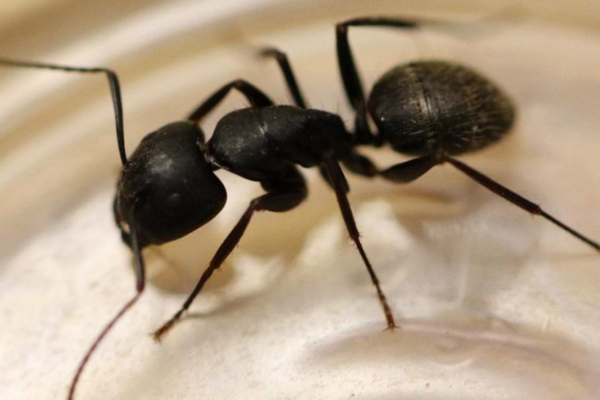
Post Audio Acrobat Ant
The acrobat ant is known for its nesting habits in damp wood and rotten areas due to fungi, but they are not limited to inhabiting only these places, since it is well known that they also live under bars, rotten trees, and even under stones. As you can see, the acrobat ant can be very versatile.
On the other hand, this interesting arthropod was named “Acrobac Ant (crematogaster – scientific name)” due to its habit of raising its abdomen above its head when it feels in danger or is disturbed.
Only in the United States, there are records that some species can have a prevalence at altitudes greater than 2,500 meters. Incredible right?
Well, today we are going to tell you everything you need to know about this interesting animal, which is well known for its eating habits, its pest category, and even for its incredible social and structural behaviors.
Are you ready? Well let’s get to it.
Geographical Distribution Acrobat Ant
Acrobat ants are found in many parts of the world, including all continents except Antarctica.
Acrobat Ant Map Distribution
Acrobat Ant Distribution Map In Us
In the United States, they are commonly found in states such as
- Acrobat Ant Alabama
- Acrobat Ant Arkansas
- Acrobat Ant Colorado
- Acrobat Ant Georgia
- Acrobat Ant Illinois
- Acrobat Ant Indiana
- Acrobat Ant Iowa
- Acrobat Ant Kansas
- Acrobat Ant Kentucky
- Acrobat Ant Louisiana
- Acrobat Ant Maryland
- Acrobat Ant Michigan
- Acrobat Ant Minnesota
- Acrobat Ant Mississippi
- Acrobat Ant Missouri
- Acrobat Ant North Carolina
- Acrobat Ant Ohio
- Acrobat Ant Oklahoma
- Acrobat Ant South Dakota
- Acrobat Ant Tennessee
- Acrobat Ant Texas
- Acrobat Ant Virginia
- Acrobat Ant West Virginia
- Acrobat Ant Wisconsin
- Acrobat Ant Wyoming
- Acrobat Ant Tulsa
- Acrobat Ant Florida
- Acrobat Ant Chicago
- Acrobat Ant Philadelphia
- Acrobat Ant Arizona
- Acrobat Ant New Jersey
- Acrobat Ant Tennessee
Acrobat Ant Distribution By Country
In terms of worldwide distribution outside of the US they have been recorded from countries such as:
- Acrobat Ant Canada (Ontario)
- Acrobat Ant Mexico (in Reynosa and Tuxtla Gutierrez)
- Acrobat Ant Central America (Belize)
- Acrobat Ant The Caribbean islands (Haiti and Jamaica)
- Acrobat Ant Europe (Czech Republic)
- Acrobat Ant Asia (India , Pakistan and Taiwan)
When it comes to climate preferences Acrobat ants tend to prefer warmer climates with a year-round temperature between 64–90°F/18–32°C. They can also often be found living indoors when temperatures drop too low for them to survive outdoors.
Habitat wise these ants can typically be found either nesting in dead wood or tree stumps or making their way down branches onto trees where they build nests inside small cracks or holes. They may also nest on walls and buildings if an available crack is present for them to exploit.
“Pest Stats”
| Color | They have very shiny bodies that are variable in color from light red to brown or black |
| Legs | 6 legs |
| Shape | Most distinguishing characteristic is its heart-shaped gaster that is held up over its thorax when disturbed. |
| Size | 2.6 to 3.2 mm long |
| Antennae | Their antennae are 11-segmented with a 3-segmented club. |
| Region | WorldWide And United States (See list above) |
What do Acrobat Ant Look Like?
As we mentioned above. Acrobat ants are small, dark brown to black insects. In some cases brightly colored specimens can be found. They have a folded abdomen that is held in the air when disturbed, which helps identify them as acrobat ants.
These ants have long legs and antennae, and their heads are slightly wider than their thoraxes. They range in size from 1/8 inch to 1/4 inch long. Acrobat ants also possess two spines on the back of their abdomens, which serve as a defense against predators or other large insects.
The average lifespan of Acrobat Ants is about two months.



Join The Ant Farming Club!
If you are looking for an Ant Farm and you don’t know which one to choose, or on the other hand you already have your first ant farm, but you don’t know how to grow your colony, take care of it or feed it. Here we offer you the best tips and products to make your colony grow healthy and strong.
In the next section, you will also find advice from professionals to choose the best products on the market such as:
- Luminous Gel
- Ant Farm Sand
- LED light
- Live Ants
- Full Ant Farm Kits For Kids
Ant Farming Club is perfect for kids wanting their first ant farm or schoolteachers wanting to show their students the biology of ants in a natural habitat.
Join
Join and learn all about the world of ants and ant farming.
Products & Discounts
Find discounts and advice from professionals about the best products on the market in 2022.
Meet
Connect with people who are passionate about the world of entomology.
Do Acrobat Ant Bite?
Effective Treatments for Ant Bites and Stings: A Comprehensive Guide
Unfortunately, there are some species of ants whose bites and stings can cause serious health problems in humans. This comprehensive guide will discuss everything you need to know about acrobat ant bites and stings, including identifying different types, what medical treatments are available, and how to prevent future encounters with these pests.
Types of Acrobat Ant Bites and Stings
Acrobat ant bites are very painful but not venomous. The ants may also spray formic acid from their abdomens as a defensive measure, which can cause skin irritation and burn-like wounds. In some cases, secondary infections can occur if the wound is left untreated.
Symptoms of Acrobat Ant Bites and Stings
The most common symptom of an acrobat ant bite is a sharp, burning pain. Other symptoms may include redness, swelling, and itching. If you are allergic to ant venom, you may experience more severe symptoms such as difficulty breathing, dizziness, or nausea.
Identifying an Acrobat Ant Bite/Sting
You’ll first want to identify the type of ant that bit you. There are many different species of ants, each with another type of venom. Once you know what kind of ant bit you, it will be easier to find the proper treatment.
There are a few ways to identify an ant bite or sting. First, look at the area where you were bitten or stung. If there is a raised, red welts, you were likely stung by a fire ant. If the site is swollen and painful, you were probably bitten by a bull ant. If there is a tiny puncture wound, you were most likely bitten by an acrobat ant.
Another way to identify an ant bite or sting is to look at the size of the wound. A fire ant sting is usually much larger than a bull ant bite. An acrobat ant bite will usually be smaller than both of these.
Acrobat ant bites can be identified by their small pinprick size, pale redness around the bite area, and sometimes a slight swelling. Usually, there is no pain associated with an acrobat ant bite.
Finally, you can try to identify the ant that bit you by its behaviour. Fire ants are very aggressive and will often swarm their prey. They are also attracted to sweet things, so a fire ant is likely responsible if you have been bitten while eating something sweet. Bull ants are also aggressive, but they are not attracted to sweets. They tend to hunt in solo missions or small groups.
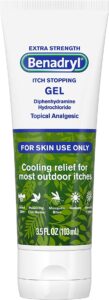
About this item
- Benadryl Extra-Strength Anti-Itch Gel temporarily relieves pain and itching associated with insect bites, minor burns, sunburn, minor skin irritations and rashes due to poison ivy, poison oak and poison sumac.
- Topical analgesic gel provides cooling, anti-itch relief from most minor pains and outdoor itches associated with insect bites.
- The cooling gel provides the relief of pain and itching associated with insect bites.

Acrobat Ant Bites and Treatment
Acrobat ants are a type of ant that is known for their ability to jump. These ants are often found in trees and shrubs and can be a nuisance if they find their way into your home. Acrobat ants are not aggressive, but they will bite if they feel threatened. The good news is that acrobat ant bites are not venomous and usually only cause minor irritation.
If an acrobat ant has bitten you, the best thing to do is to wash the area with soap and water. You can also apply a cold compress to the site to help reduce swelling. You may take over-the-counter pain medication if you are experiencing pain or other symptoms. In most cases, acrobat ant bites will heal within a few days. However, if you develop an infection or a different severe reaction, you should immediately see a doctor.
Allergic Reactions to Ant Bites and Stings
The first step is to seek medical attention as soon as possible after being bitten or stung. If you have a severe reaction, you may need to be hospitalized and treated with injectable epinephrine and other medications.
For less severe reactions, over-the-counter antihistamines can help reduce symptoms. If you have a history of severe reactions, your doctor may prescribe you an emergency epinephrine auto-injector to keep with you at all times. Wearing a medical ID bracelet or necklace can also be helpful in case of an emergency.
Understanding your allergy and knowing the signs and symptoms to look out for can help ensure that any reactions are treated quickly and effectively.
Natural Treatments for Acrobat Ant Bites
There are several effective natural treatments for Acrobat ant bites and stings. These include:
1. Apply topical corticosteroid cream such as hydrocortisone to the affected area. This can help to reduce swelling and itchiness.
2. Mix one baking soda with three parts water to form a paste, then apply this to the affected area. This can help to soothe the skin and reduce swelling.
3. Make a mixture of 1 tablespoon apple cider vinegar and two tablespoons water, and apply this to the affected area using a cotton ball. This can help neutralize the venom and relieve itching and pain.

About this item
- Benadryl Extra-Strength Anti-Itch Gel temporarily relieves pain and itching associated with insect bites, minor burns, sunburn, minor skin irritations and rashes due to poison ivy, poison oak and poison sumac.
- Topical analgesic gel provides cooling, anti-itch relief from most minor pains and outdoor itches associated with insect bites.
- The cooling gel provides the relief of pain and itching associated with insect bites.

YOU CAN ALSO LISTEN HERE!
Audio Acrobat Ant 2
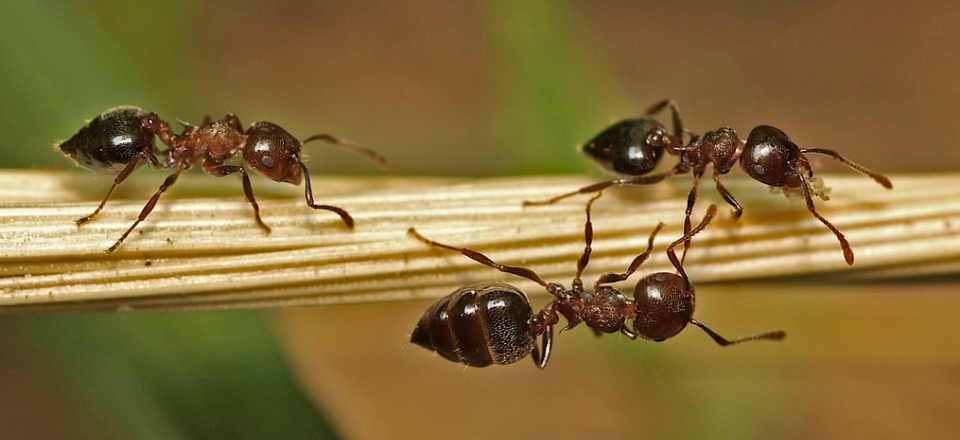
Natural Behavior Acrobat Ant
In their natural environment, Acrobat Ants are active hunters that search for prey on the ground and in vegetation. They often tend to aphids or scale insects to feed off these pests’ honeydew secretion. Acrobat ants also have a mutualistic relationship with some beetles, such as dung beetles, where they carry them around and defend them from predators in exchange for shelter. When threatened, acrobat ants can lift their abdomens over their heads and curl into a tight ball – hence their name! This behavior helps protect them from potential threats like birds or other large predators.
The natural behavior of acrobat ants is to forage for food, defend their nests, and swarm when disturbed. They are very social insects living in large colonies or fortress, often observed by following the trail they leave as they search for food. Acrobat ants feed on small arthropods, nectar, sap, and fruits.
When disturbed, these ants raise their abdomens over their heads in a characteristic defensive posture from which they get their name.
Acrobat ant wars
Acrobat ant wars are a common occurrence in many ant colonies. These disputes often take place when two or more colonies of acrobat ants come into contact with one another. The ants will usually try to establish dominance by fighting, sometimes resulting in fatalities. When this happens, the dominant colony will typically become the new home for all of its members and any other nearby ants that may have been displaced during the conflict. If no clear winner emerges after several rounds of fighting, both sides may reach an agreement and agree to cohabitate peacefully in their respective territories.

Funny Fact About Acrobat Ant
Where does the Acrobat Ant name come from?
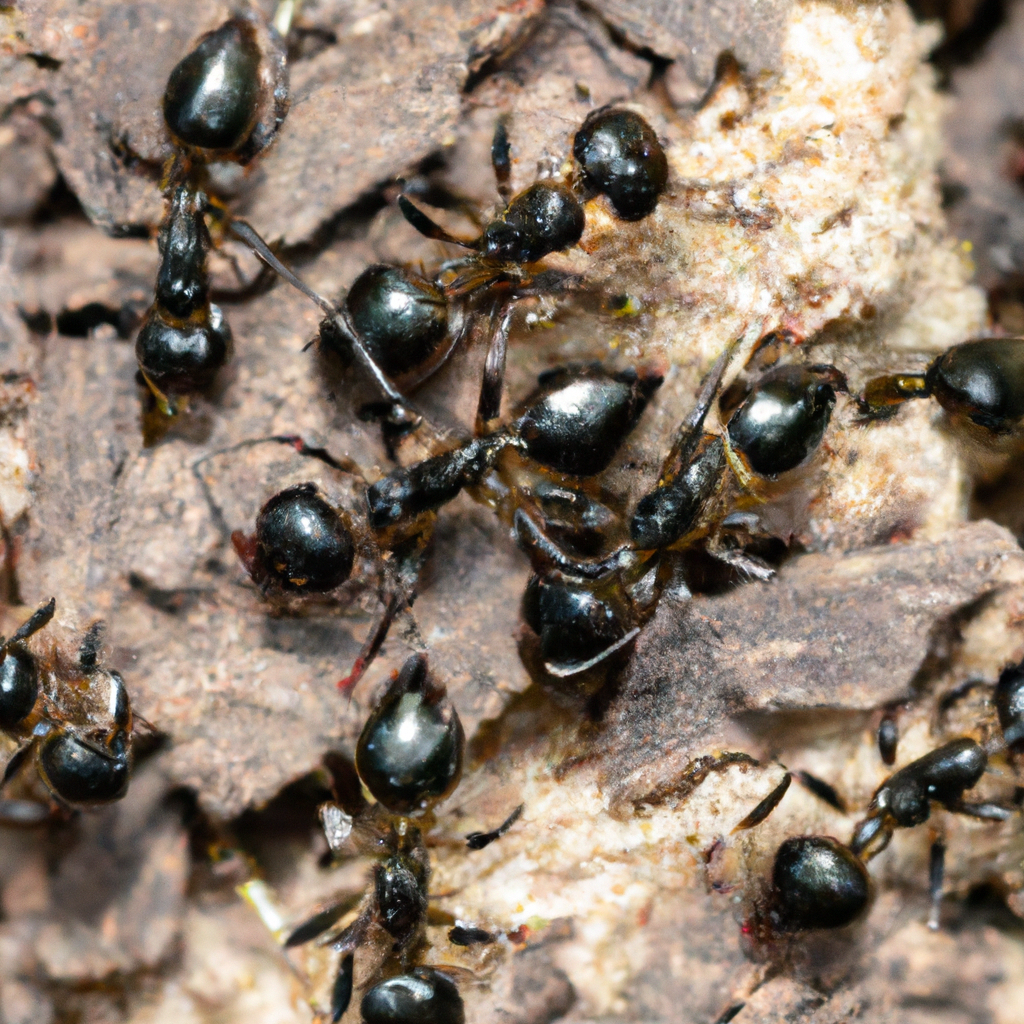
Acrobat ants are a unique species known for their ability to flatten and curl their abdomens over the rest of their body when threatened. This ingenious defense mechanism makes them look like an acrobat doing a handstand, hence their name. When predators or other threats are encountered, these elegant little insects quickly turn upside down and remain stationary, making it difficult for their enemies to attack them. This gives the acrobat ants a fighting chance against more prominent and powerful foes and serves as a warning to other colony members. These fascinating creatures are indeed a sight to behold!
Acrobat Ant Photos And Pictures




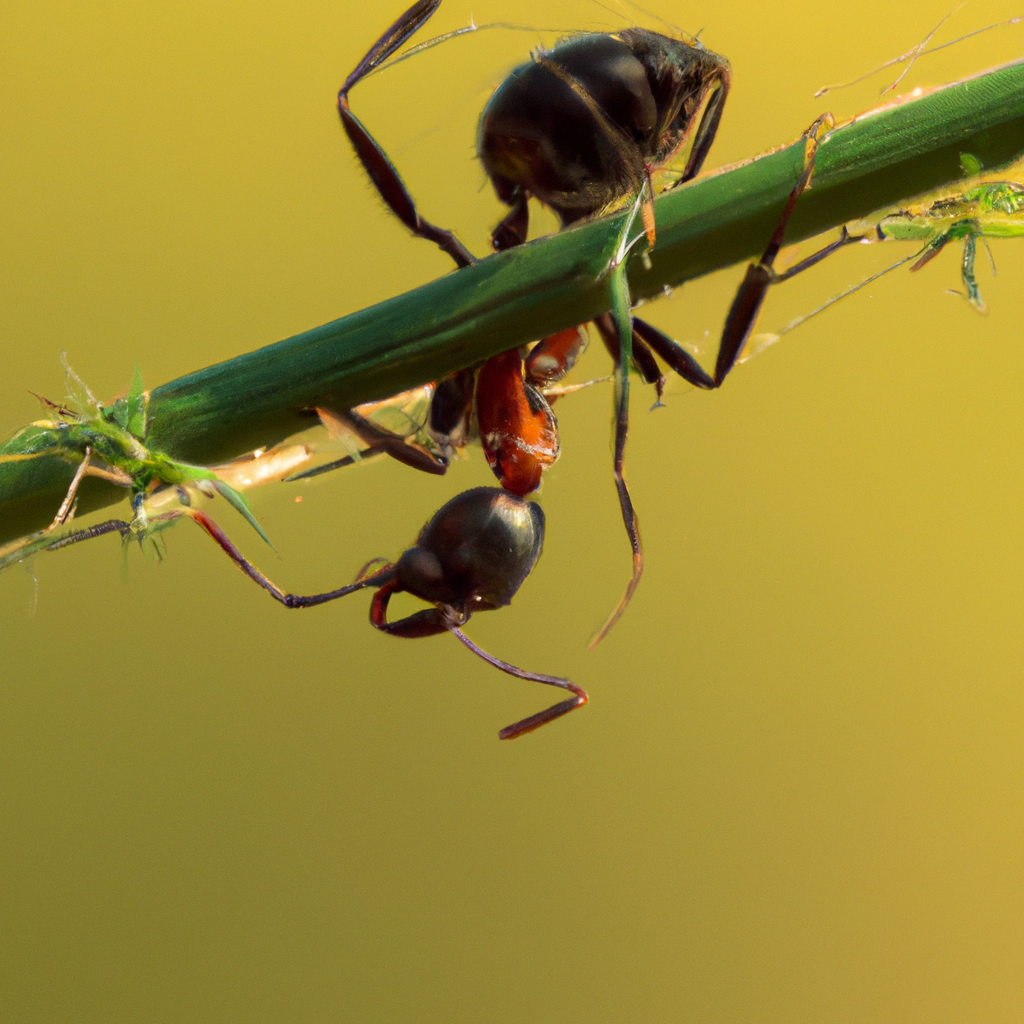
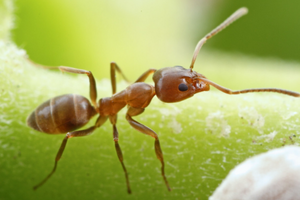
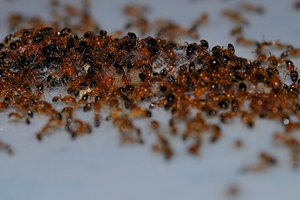

Seasonal Colony Trends [All You Should know]
Acrobat Ant Reproduction (Reproductive Biology)
Now that we’ve delved a bit into the anatomy of acrobat ants, their feeding behaviors, and even the origin of their curious name, we’ll explore the reproductive biology of these fantastic ants, including their unique mating strategies and the intricate roles they play of each gender in producing successful offspring.
Acrobat ants reproduce seasonally in colonies. One of the primary trends observed in these colonies is an increase in worker population size during warmer months and a decrease during cooler months.
This seasonal trend is likely because acrobat ants require temperatures between 70-80°F (21-27°C) for mating and reproduction, limiting their reproductive success when temperatures become too cold or hot. In addition, it’s thought that this species may enter into a “diapause” period over winter, where development slows down until favorable conditions return.
During summer, females lay eggs that hatch after about two weeks into larvae which workers feed before maturing into adults about three weeks later. The number of eggs each female lays varies but can easily reach several hundred per nest per year, with more giant nests seeing up to 1,000 new offspring yearly!
Acrobat Ant Environmental and human impact
Acrobat ants are considered a pest species that can cause damage to homes and other structures.
They can infest structural wood, feed on stored food, and invade living spaces. When indoors, they may bite humans with their relatively large mandibles or spray acid from the tip of their abdomens when disturbed.
Acrobat ant populations also have ecological implications by competing with native ants for resources and potentially reducing biodiversity in some areas. Additionally, acrobat ants may act as vectors for various pathogens since they often live near human habitats.
YOU CAN ALSO LISTEN HERE!
Audio Acrobat Ant 3


Acrobat Ant Education (Acrobat Ant Life Cycle)
Acrobat ants are small, blackish ants with long curved abdomens that give them the ability to raise their rear ends in a distinctive acrobatic posture when disturbed.
They are found throughout much of North America, from southern Canada down to northern Mexico.
Habits
Generally speaking, Acrobat Ants prefer warm and humid climates and will seek shelter in decaying wood or plant matter during colder months. During the warm months, they can be seen building nests outdoors under stones, fallen branches, or other organic debris. They also build colonies indoors where they may enter through open windows or doors and invade food sources like pantries and pet food dishes.
The species is omnivorous but prefers sweet substances related to honeydew excreted by aphids on plants; protein-rich foods such as insects, spiders, and eggs; as well as fruit juices and soft drink syrups, among others.
When this ant is disturbed, members of the species tend to move around erratically while they attempt to escape danger by raising their hindquarters into an “acrobatic” stance which gives them an appearance similar to a scorpion’s tail raised for defense purposes.
Habitat (Ecology)
The preferred habitat for Acrobat Ants is moist soil containing decaying deadwood near trees with sap-feeding insects present, such as aphids & mealybugs, which provide them easy access to sugary liquid secretes often referred milkdews. In addition, these ants pose no significant threat to humans (They are not dangerous); however, their presence does need to be managed if left unchecked due to too large numbers could make living conditions uncomfortable or cause potential health risks, so it’s important to establish effective control methods if infestations occur inside buildings.
Threats To Humans (Acrobat Ant ants harmful?)
Acrobat ants do not directly harm humans but can contaminate food sources by seeking out sweet liquids, becoming nuisance pests when entering houses looking for resources, inhabiting structures & yards creating annoying problems that must be addressed using appropriate pest management techniques to prevent further damage occurring detrimental amounts moisture built up where live leading possible structural issues form mold mildew growth over time anyone experiencing should contact professional exterminator help eliminate promptly efficiently safely.
Environmental Requirements
Preferred environments contain abundant vegetation providing nectar proteins, sugars that encourage sustenance, healthy population development, warmth, and humidity necessary to produce new offspring, sustain colony weather predators natural competition require adequate protection cover rocks decomposing pieces logs bark mulch stored firewood piles old stumps piles leaves, etc. allowing ample opportunity construct hideouts defend against threats survive climate changes making adaptable creatures extreme temperatures harsh conditions sometimes threatening lives high reproductive.
Acrobat Ant Nutrition And Diet
The Acrobat ant (Crematogaster spp.) is an omnivore and scavenger, meaning it will eat both plants and animals.
Its diet consists of
- Honeydew produced by aphids,
- Decaying plant matter,
- And other insects such as termites, flies, and beetles
- In addition to these food sources, the Acrobat ant may also feed on small fruits like berries or nuts.
They can even be attracted to sugary substances like syrup or soft drinks! To obtain nutrition from its prey, the acrobat ant tends to cut up pieces of their prey before consuming them.
Water is essential for hydration but also helps to break down large food particles into more easily digestible forms for easier digestion.
Nests and Colonies
The colony is typically composed of one queen, many workers, and several males.
Acrobat ant nests are usually located outside, in trees or under loose bark, although they can also be found indoors.
Indoors, their nests may involve voids within walls or attic spaces and other closed areas around the home such as behind baseboards and door frames.
Outdoors nests may include hollow limbs of trees and logs as well as landscape mulch piles or leaf litter piles. Acrobat ant colonies often have multiple entry points (called satellite nest sites) which are used by the ants to expand their nesting territory while avoiding danger from predators as well as resources like food sources.
Acrobat Ant Queens, generalities, behavior, role in the colony
Acrobat ant queens are the reproductive members of their colonies, responsible for laying eggs and producing new workers.
They typically establish a nest in soil or wood and live between two to five years. The queen is usually larger than the other ants in her colony, with a dark brown body that can be up to 8 mm long.
In terms of behavior, Acrobat ant queens help build and maintain nests as well as care for larvae by grooming them continuously. They also regulate the temperature within the colony by fanning their wings in order to disperse heat from their bodies.
The role of an Acrobat ant queen is very important for her colony’s survival: she produces all new workers which are essential to maintaining a thriving environment within her colony through tasks such as gathering food and defending against predators or parasites.
The Best Products 2023
Formicarium
Formicarium
Ant Farm
Ecosystem
Entomology supplies
Test Tube Packs
Pipettes
Feeding Dishes
Ant Foods
Ant Nectar
Feeders
Eco-Fresh Rice Worms
Fly Larvae
Kits
Terrarios
Nest Kit
Ant Farm Sand
Ant Farm Neon Gel
Acrobat Ant Pest Prevention & Control
Ants are fascinating creatures. From their intricate communication systems to their impressive strength in carrying objects many times their own weight, they never fail to impress us with their abilities. But when it comes to acrobat ants, admiration can quickly turn into frustration and annoyance as they invade our homes and become a nuisance. In this section, we’ll discuss everything you need to know about preventing and controlling acrobat ant infestations, including tips on how humans can eradicate them once and for all!
Acrobat ant swarmers
Acrobat ant swarmers are winged reproductive ants that leave their original colony to mate and establish a new colony. They have large, heart-shaped abdomens with uneven edges, which gives them the ability to raise their rear end off the ground in an acrobatic display when disturbed.
These swarming ants can become nuisances when they enter homes or businesses in search of a suitable nesting site.
In these cases, it is important for pest control professionals to be contacted in order to identify and safely remove the acrobat ant infestation.
Wanna learn more about Ants? Join an Online Community of more than 1000 Readers Around the Country.
Here you can sign in to our newsletter to receive daily emails with funny facts, interesting details about ants, step-by-step tutorials, and even good practices to have a healthy ant farm colony. We’ll be more than happy to have you in…

How to Get Rid of Acrobat Ants (Easy Steps)
1 – First Step: Inspection & Control
Prevention
1. Ensure all garbage is bagged and containers tightly sealed: To prevent acrobat ant infestations, ensure all your trash is appropriately bagged and tightly closed.
2. Keep countertops and floors clean: Vacuum or mop floors frequently and wipe down counters with a damp cloth regularly or after spills occur to remove crumbs or other potential food sources for acrobat ants.
3. Seal up any crevices around doors and windows: Use caulk to seal any cracks around window frames, doorframes, etc., that may allow entry points for ants into your home.
4. Inspect plants before bringing them indoors: Before you bring in new houseplants, scrutinize them outside so you can spot any signs of an acrobat ant infestation before they enter your home – this will save you time and hassle later on if it turns out the plant was infested with ants!
5. Place bait traps in areas where ant activity has been seen: If there are specific locations in which you have seen an increase in ant activity (such as near trash cans), baited traps can be placed strategically to draw the acrobat ants away from these areas instead of having them move further inside your home or business premises.
2 – Second Step: Natural Methods To get rid of Acrobat Ant
Outdoor And Indoor Organic Pest Control Products
Diatomaceous Earth
Diatomaceous Earth is a naturally occurring soft sedimentary rock that has been ground down to a fine white powder.
This powder damages the exoskeleton of insects, so it acts as a barrier that acrobat ants won’t cross.
If you have potted plants on a shelf, you can put a small amount of diatomaceous earth down by the legs of the shelf, preventing ants from getting up onto the plants.
These barriers can be put virtually anywhere, both indoors and outdoors.
While Diatomaceous earth is safe for humans to handle and even eat, it does create fine dust that should not be inhaled.

PROS About Diatomaceous Earth
Among its most striking advantages is the low risk to the health of people, children, and pets, as well as the residual years that this compound can have in our home, providing extra protection against pests. This material is not recommended for use on carpets or floors that you would vacuum.
CONS About Diatomaceous Earth
Although this product represents a non-chemical solution to avoid chemical pesticides. This powder can have some drawbacks. An example of this is that insects need to have direct contact with the material, as well as prolonged contact for it to have a greater effect. This means, that if we decide to use this. We must distribute it throughout our home in large quantities. On the other hand, Diatomaceous Earth must be kept dry, so it is not a good idea if we want to use it in our gardens that are damp from irrigation.
Despite its low toxicity. This material could not be used to kill ants if it did not have some level of danger to the health of insects, so the use of dust masks is recommended, as well as applying it in ventilated areas since this dust could cling to the mucous membranes of the nose and mouth. Also, the dust could fly and generate allergies if we apply it in places where there are fans or air conditioning.
Boric Acid
Boric Acid is a type of Acid found in many naturally occurring minerals, such as borax. Borax is found in many cleaning products, including some types of toothpaste.
Boric Acid has a very low toxicity level for mammals but not for ants. It interferes with their digestive system and slowly terminates them.
The trick is to keep the level of boric Acid low enough so that it travels through the colony and makes it to the queens and young before killing the ants.
I will give you a personal recommendation of a product that is currently on the market called Terro. This contains borax, and I found it effective against acrobat ants.
You can also find recipes online to make your own gel bait at home using borax. (Here are the steps if you are interested)

PROS About Boric Acid
This product dissolves easily in water, which allows us significant savings. On the other hand, it is more granular than powder. Which makes it less likely that we will inhale it by mistake.
It is useful for other types of pests, such as cockroaches.
CONS About Boric Acid
In very humid climates, if not stored properly, it can become damp and ruined. Therefore, it is recommended to store the mixture in a gallon Ziploc bag to keep it dry and protected when not in use.
Essential oils
Acrobat ants communicate with each other using pheromones. A forager that finds food marks a trail on the way back to the colony. This scent trail is followed by other ants, and these ants then reinforce the trail when they head back to the colony with food.
Pheromones also help ants tell each other apart, warn each other of danger and communicate all sorts of messages we’re only beginning to understand.
Most essential oils have a very strong fragrance. We can use this strong fragrance to mask pheromone trails and disrupt the coordination of ants. This method, in addition to being very efficient, allows you to drive away the ants in a natural way without causing them harm.
Essential oils can be added to soapy water that can be used to clean pots and shelves where we keep cacti and succulents. This will mask any previous messages ants left behind to tell other ants… HEY! There is a good food source, water, or shelter.
My Favorite essential oils to use for ants are:
- Peppermint
- Cedarwood
- Lemongrass and
- Clover
However, there is a high range of essential oils that we can use to keep ants away from our homes. Below we offer you a select list of the most efficient oils with the best results on the market.

Pros About Essential Oils
These essential oils represent rapid elimination and residual repellency. which means many months of additional protection.
On the other hand, this represents a highly respectful pest control with our environment.
In the case of living with other beneficial insects for us, such as bees or other pest-control insects. These represent minimal risk.
Finally, as we all know. Essential oils offer us a natural and pleasant fragrance for our home.
Cons About Essential Oils
Essential oils are very useful for many purposes despite their effectiveness in pest control. We may need large amounts to eradicate large ant colonies. Essential oils are expensive, so it can cost us a few dollars to completely eradicate an ant colony.
3 – Third Step: Insecticides and Ant Baits To Control Acrobat Ant (Best Acrobat Ant Killer)
Best Ant Bait For Acrobat Ant
- Baits (protein/fat-based baits).
- Honeydew Aphid Baits
- nectar baits
- Plant product baits as well as sugary carbohydrates.
Acrobat Ant Control Using Insecticides
1. Identify the areas of infestation and treat them with an insecticide labeled for use against Acrobat ants.
2. Thoroughly inspect the affected area and all potential nesting sites, including voids in walls/ceilings, around windows/doors, and any other areas where acrobat ants may be living or entering the home.
3. Seal all cracks, crevices, and gaps with a silicone or latex caulk to prevent further entry from outside sources when possible; replace weather stripping on doors and windows if needed.
4. Apply insecticidal dust (e.g., diatomaceous earth) into walls voids, behind baseboards, and along door frames using a dust applicator or bulb duster to reach these hard-to-reach places as part of your overall Acrobat ant control strategy; this will also help deter future infestations by creating a barrier against reentry of new colonies of Acrobat ants inside your home’s structure once you have successfully exterminated existing ones within it at present time(which should only be done via contact treatments listed below).
5. Use an appropriate liquid residual repellent insecticide such as Suspend SC Insecticide around windowsills/doorways & eaves on exterior surfaces where acrobats are likely entering buildings – this is known as a “barrier treatment” approach that can provide long-term protection from reinfestation while targeting active nest sites directly too w/instructions found on the product label before applying products like Suspend SC in order to maximize efficacy & safety during applications!
Subfamilies Of Ants
View More
View More
Ant SubFamily Group 3
View More

Did You Know That…
An interesting fact about Acrobat ant pest control
Acrobat ant pest control is most effective when done on a regular basis. This includes removing food sources that can attract these ants, cleaning up any spills or messes immediately, and sealing off potential entry points like cracks or gaps in walls or windows. Additionally, if an infestation does occur baiting systems with insecticides are often the best way to quickly eliminate the problem.
YOU CAN ALSO LISTEN HERE!
Pending 4
How to Raise an Acrobat Ant Colony? The Ultimate Guide
Are you fascinated by the acrobat ants and their incredible abilities? Do you want to learn how to raise your very own acrobat ant colony? Look no further because this ultimate guide has got you covered! From setting up the perfect habitat to feeding and caring for your ants, we will take you through all the steps needed to successfully raise an acrobat ant colony. Get ready for a thrilling journey into the world of these amazing insects as we dive into everything you need to know about raising your very own colony of acrobat ants. Let’s get started!
Chapter 1: Getting Started in Acrobat Ant Keeping!
How to get an Acrobat queen ant?
Acrobat queen ants cannot be obtained naturally. They are a species of ant that has been bred in captivity specifically for the pet trade. If you are interested in acquiring one, your best bet would be to contact a specialized breeder or retailer who specializes in exotic ant species.
How to identify an Acrobat queen ant?
To identify an Acrobat queen ant, look for a blackish-brown ant with yellow and brown stripes on the abdomen. They also have very long antennae and large wings that are used for their unique acrobatic mating flight. The queens may also be larger than worker ants of the same species.
Time for a queen ant to start a new colony
It typically takes an acrobat queen ant two to four weeks to establish a new colony.
How to start an acrobat ant farm? (Step by Step)
1. Gather Your Supplies: Before you begin, make sure to have all of the supplies necessary to create an acrobat ant colony. This includes wood, soil, sand, and small stones or pebbles for drainage purposes. You may also need a food source (either dry cat food or honey) and water in a shallow dish.
2. Create the Habitat: Choose an appropriate container that is at least 16 inches deep and has plenty of ventilation holes on the sides. Place two-thirds of it with dampened soil mixed with sand and small stones for drainage purposes before adding a layer of wood chips about 1 inch thick over top to create a nesting area for your ants. Make sure there’s enough room between the wood chips that air can pass through easily so your ants don’t suffocate from lack of oxygen.
3 Put in Your Ants: Once you’ve finished setting up your habitat, place several worker acrobat ants into it along with their queen ant if they came as part of a set purchased from an online shop or pet store provider; otherwise add only worker ants until you find one compatible queenant who’ll join them later on down the road once she’s established herself within her new surroundings properly first off quite naturally all by herself without much prompting needed whatsoever thankfully!
4 Feed Your Ants: Workers will feed on grains such as oats while queens require more protein like fatty insects including caterpillars—or alternatively feed nonliving sources like dry cat food crumbles &/or sugary solutions like honey—in order to stay nourished & healthy throughout their lifetimes in captivity too additionally afterwards similarly speaking…
5 Monitor Their Progress Regularly: Keep watch over your colony every few days to ensure everything is going smoothly for them; look out for any signs that might indicate problems such as disease outbreak amongst other forms potentially which would then necessitate quick action being taken towards rectifying whatever is causing said issue(s) ASAP!
The Best Products 2023
Formicarium
Formicarium
Ant Farm
Ecosystem
Entomology supplies
Test Tube Packs
Pipettes
Feeding Dishes
Ant Foods
Ant Nectar
Feeders
Eco-Fresh Rice Worms
Fly Larvae
Kits
Terrarios
Nest Kit
Ant Farm Sand
Ant Farm Neon Gel
Acrobat Ant Farm Ecosystems
| Ant Farm For Classroom | Light-up Ant Habitat |
| Ant House With Feeding Area | Wall Hanging Ant Farm |
| An ecosystem with live ants | Ant farm for Preschool |
| Pet Anthill Ant House | Nest Insect Castle |
| Glow In The Dark Ant Farm | Aquariums For Ants |
| Ant Farm With Instructions | Ant Farm With Queen |
| LED Ant Farm for Live Ants | Connectable Ant Farm |
| Ant Farm For Kids | New Large Plaster Ant Farm |
| Pocket colony | Ant Farm With Queen |
Acrobat Ant Farm Supplies
| Feeder | Feeding Area |
| Tunneling sand | Tunnel starter tool |
| Ecological Ant farm gel | Ants farming aphids |
| Nutrition and Care | Ants farming mushrooms |
| Ecological blue gel | Fungus for ant farms |
| Handcrafted Wood | Ant habitats |
| Ant Plastic Tubes | Ant Glass Tubes |
| Food for ants | Ant Farm Nectar |
| Ant Farm Live Insects | More Supplies |
Live Ants For Sale
| Live Ants | Best ant species |
| Coolest Ants To Keep | Interesting Ants |
| Fungus-farming ants | Exotic ants |
| Big Ants | Buy Queen Ant |
| Buy Worker Ants | Buy Soldier Ants |
| Domestic ants | Fungus farming ants |








